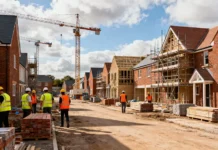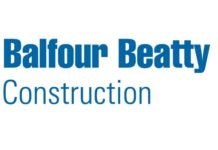In the intricate world of construction and real estate, few topics require as much legal precision as principal residence regulations.
These laws, designed to delineate tax benefits, zoning restrictions, and property rights, are essential for anyone building, renovating, or selling a home. Missteps can carry significant financial consequences, affect project timelines, and even trigger litigation. Understanding these regulations isn’t just prudent—it’s critical.
This article provides a comprehensive guide to principal residence regulations, explaining how they intersect with construction law, property development, and tax compliance. It blends legal insight with practical advice, ensuring builders, homeowners, and developers can operate both safely and efficiently.
What Is a Principal Residence?
At its core, a principal residence is the property where an individual primarily lives. Most jurisdictions recognize a single home as the principal residence for tax and regulatory purposes. The designation affects:
- Capital gains tax exemptions: Many countries offer tax relief on the sale of a principal residence, provided it meets occupancy requirements.
- Zoning and planning approvals: Principal residences may be subject to specific building codes or restrictions not applicable to secondary homes or rental properties.
- Mortgage and financing rules: Lenders often differentiate between primary residences, second homes, and investment properties in loan terms.
Despite seeming straightforward, defining a principal residence can become complex when construction is involved—especially with multi-unit properties, renovations, or temporary relocations.
Construction Law Considerations
Construction law governs the rights, responsibilities, and liabilities of all parties involved in building a property. When principal residence regulations intersect with construction law, several issues emerge:
1. Building Permits and Approvals
Even if you intend the home to be your primary residence, local authorities often require formal permits for:
- New construction
- Additions and renovations
- Structural modifications
Failing to secure permits can result in fines, mandated demolition, or legal disputes. Moreover, the definition of a principal residence may influence which permits are required, particularly if certain tax incentives are available only for owner-occupied homes.
2. Compliance with Occupancy Rules
Many jurisdictions tie tax benefits or zoning allowances to occupancy:
- Minimum duration requirements: Some regions require the owner to occupy the property for a specified period to qualify as a principal residence.
- Documentation: Utility bills, driver’s licenses, and voter registration are commonly used to confirm occupancy.
- Construction timelines: Extended delays in completing construction may jeopardize the principal residence designation if the property remains uninhabited.
Builders and homeowners must carefully plan construction schedules to align with regulatory expectations.
3. Tax Implications of Renovations and Additions
Significant construction work can affect the tax treatment of a property:
- Adding a new wing or converting a space for income generation (like a rental suite) may change the classification of the residence.
- Certain jurisdictions allow capital improvements to increase the basis of the property for tax purposes, but only if the property is still considered the principal residence.
- Misreporting improvements or occupancy can trigger audits or penalties.
A meticulous understanding of local tax law is essential to avoid inadvertent violations.
Common Legal Pitfalls and How to Avoid Them
Even experienced homeowners and builders encounter challenges when navigating principal residence regulations. The most frequent pitfalls include:
- Assuming occupancy is automatic: Simply living in a home doesn’t always meet legal definitions. Evidence of permanent residence may be required.
- Ignoring zoning overlays: Some properties are subject to overlay zones or special designations that restrict renovations or expansions, even for owner-occupied residences.
- Misclassifying secondary structures: Detached garages, guest houses, or granny flats may be treated differently, affecting taxes or occupancy rules.
- Overlooking timing rules: Tax benefits for principal residences often depend on precise dates of purchase, occupancy, and sale.
Preventing these issues requires proactive legal consultation, careful record-keeping, and a thorough understanding of local construction and tax codes.
Practical Strategies for Builders and Homeowners
Navigating principal residence regulations successfully requires combining legal knowledge with strategic planning. Key strategies include:
1. Early Legal Consultation
Engage a construction lawyer or property tax expert before breaking ground. Early advice can prevent costly mistakes and clarify the scope of allowable renovations.
2. Maintain Comprehensive Documentation
Keep records of:
- Building permits and inspections
- Construction contracts and invoices
- Utility connections and occupancy evidence
These documents are invaluable during audits, disputes, or when selling the property.
3. Align Construction Timelines with Occupancy Requirements
If tax exemptions or zoning allowances depend on occupancy, ensure:
- The property is habitable and officially occupied within the required timeframe.
- Temporary relocation arrangements do not inadvertently affect the principal residence designation.
4. Consider the Long-Term Tax Implications
Evaluate how renovations, extensions, or income-generating structures will affect:
- Capital gains calculations
- Depreciation and basis adjustments
- Future resale value
Forward-thinking planning can safeguard both compliance and profitability.
5. Coordinate with Local Authorities
Some municipalities offer expedited approvals or incentives for primary residences. Establishing early communication can smooth permit acquisition, avoid surprises, and ensure compliance.
Case Studies: Lessons from Real-Life Scenarios
Scenario 1: Multi-Unit Construction
A homeowner built a secondary suite for family members while planning to sell the main house later. Without consulting a tax professional, they assumed the entire property would qualify for principal residence exemptions.
An audit revealed that the income-generating suite partially disqualified the property, resulting in unexpected tax liability.
Lesson: Always confirm how modifications affect principal residence status.
Scenario 2: Delayed Construction Completion
A builder constructed a custom home intended as a primary residence but faced months of delays due to supply chain issues. The homeowner moved in later than the legal occupancy requirement, missing out on tax exemptions.
Lesson: Align construction schedules with occupancy rules to preserve benefits.
Scenario 3: Renovations Affecting Zoning Compliance
A homeowner added a garage and loft conversion without verifying zoning overlays. Local authorities mandated costly alterations to meet principal residence occupancy definitions.
Lesson: Review zoning and overlay rules before commencing construction or renovations.
Key Takeaway
Principal residence regulations intersect with construction law in ways that profoundly impact homeowners, builders, and developers. Legal compliance, tax strategy, and construction planning are inseparable when aiming to maximize benefits and avoid penalties.
To navigate these regulations successfully:
- Engage legal and tax experts early
- Maintain meticulous documentation of construction and occupancy
- Plan construction timelines with regulatory requirements in mind
- Consider long-term tax implications of renovations and secondary structures
- Coordinate closely with local authorities and building departments
In essence, understanding and respecting principal residence regulations is not just about avoiding fines—it’s about protecting investment, ensuring compliance, and optimizing the value of the property.
For those who master this intersection of construction law and property regulation, the rewards are both legal security and peace of mind.































